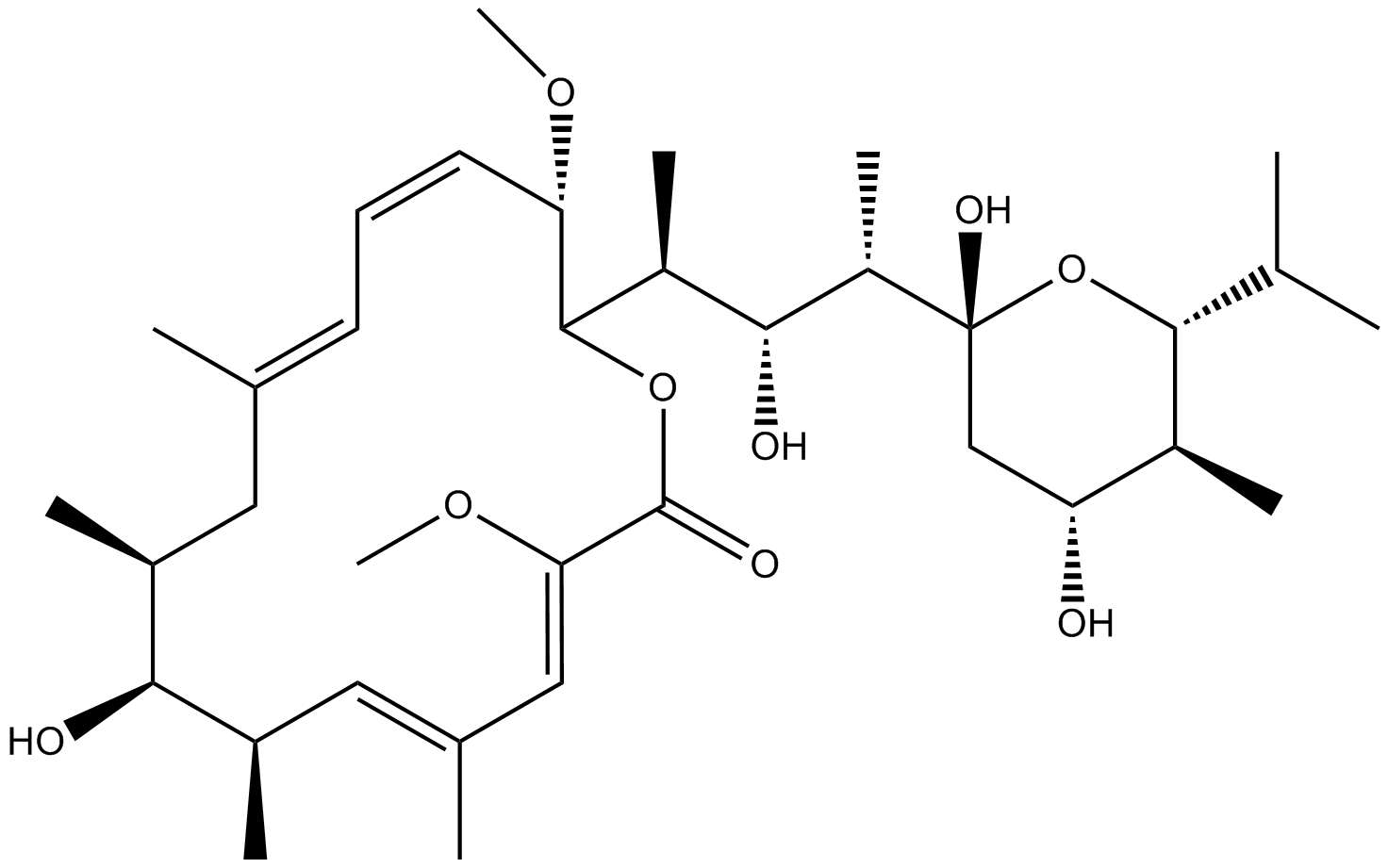Bafilomycin A1 (Synonyms: NSC 381866) |
| رقم الكتالوجGC17597 |
البافيلومايسين A1، وهو مضاد حيوي ماكروليد (معزول) مأخوذ من سلالة الستريبتوميسيس، هو مثبط لأدينوزين ثلاثي الفوسفات في الفجوة الحبيبية (V-ATPase).
Products are for research use only. Not for human use. We do not sell to patients.

Cas No.: 88899-55-2
Sample solution is provided at 25 µL, 10mM.
Bafilomycin A1, a macrolide antibiotic isolated from the Streptomyces species, is an inhibitor of vacuolar H ATPase (V-ATPase). Bafilomycin A1 has been used to study the autophagy as an inhibitor of autophagosomes-lysosomes fusion and as an inhibitor of lysosomal degradation.[1] It binds to the V0 sector subunit c of the V-ATPase complex and inhibits H translocation which cause an accumulation of H in the cytoplasm of treated cells. Bafilomycin A1 inhibits cell growth and leads to apoptosis and differentiation. These anticancer effects of Bafilomycin A1 are considered to be attributable to the intracellular acidosis caused by V-ATPase inhibition.[2]
In vitro study of Bafilomycin A1 indicated that Bafilomycin A1 preferentially inhibits in vitro growth of pediatric B-cell acute lymphoblastic leukemia cells. A various of leukemia cell lines including 697, Nalm-6, RS4;11, NB4, HL-60, K562 and BV173 representing B-ALL (697, Nalm-6, RS4;11), acute myeloid leukemia (NB4, HL-60), and chronic myeloid leukemia (K562, BV173) were used to investigate the effect of Bafilomycin A1. Cells were cultured in the presence of increasing concentrations of Bafilomycin A1 (0 nM, 0.5 nM, 1 nM). Cell proliferation was measured using an MTT assay. Results showed that Bafilomycin A1 has frequently been used as an inhibitor to block the autophagosomes-lysosomes fusion, or to inhibit lysosomal activity at high doses (0.1–1 mμ). While low concentration of Bafilomycin A1 (1 nM) cpuld effectively and specifically inactivate autophagy and activate apoptosis at multiple targets in pediatric B-ALL cells.[3]
In vivo study demonstrated that Bafilomycin A1 can extend survival in the Bafilomycin A1-treated B-ALL mice with advanced disease compared with control mice. The red blood cell counts, hemoglobin concentration, and platelet counts in the B-ALL model group were extremely reduced, however they were normalized in the Bafilomycin A1-treated group. The mice in the B-ALL model group had severe hepatosplenomegaly compared with the control group. However, the size and weight of livers and spleens in the Bafilomycin A1-treated group were normalized compared with those in the disease model group. Results showed that Bafilomycin A1 dramatically inhibits pediatric B-ALL cell engraftment by targeting leukemia cells in vivo.[3]
References:
[1]. Yamamoto A, et al. Bafilomycin A1 prevents maturation of autophagic vacuoles by inhibiting fusion between autophagosomes and lysosomes in rat hepatoma cell line, H-4-II-E cells. Cell Struct Funct. 1998;23(1):33–42.
[2] Bowman EJ, et al. The bafilomycin/concanamycin binding site in subunit c of the V-ATPases from Neurospora crassa and Saccharomyces cerevisiae. J Biol Chem. 2004;279(32):33131–33138.
[3]. Yuan N, et al. Bafilomycin A1 targets both autophagy and apoptosis pathways in pediatric B-cell acute lymphoblastic leukemia. Haematologica. 2015 Mar;100(3):345-56.
Average Rating: 5 (Based on Reviews and 39 reference(s) in Google Scholar.)
GLPBIO products are for RESEARCH USE ONLY. Please make sure your review or question is research based.
Required fields are marked with *




